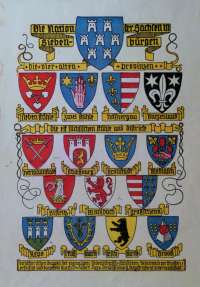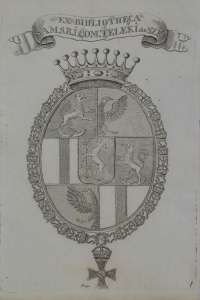Transylvanian Pavilion
Two proposals that requested the “presence” of a temporary pavilion representing Transylvania at the Venice Biannual. The first one was addressed to Professor Bonito-Oliva in 1993 and the second was addressed to Francesco Bonami in 2003 after announcing that there will be a “temporary” Palestinian Pavilion in Venice. As you know, later, also a Gypsy Pavilion became a pet project.
Timeline 1986 - immigrated to USA. The the communist government took away abusively my citizenship. I became STATELESS.
1991 - Spring - I wanted to return to Rumania to do research on Transylvania. Still "stateless" and only with an American re-entry permit, I flew to Geneva where I was arrested for not having a visa. Even after verifying my three appointments at various museums, the Swiss government deported me back to New York. I’m maybe one of the few people who ever wanted to go EAST and was deported WEST, deported to USA, the dream of any immigrant. For me was a creative and financial setback. Now I’m an American living in San Francisco, CA.
1991 - Fall - extensive photographic documentation in Transylvania to dispel the fictional notion of the place associated with Hollywood and Dracula. 1992 - establishing “muzeul de fotografie a/al transilvaniei” (The Museum of photography of/from Transylvania) as a context for a work-in-progress.
1993 - meeting in february Robert Pincuss-Witten at Gagosian Gallery in New York. Presenting the idea of a Transylvanian Pavilion at the Venice Biannual. He was the first one to enthusiastically support the prank. To validated the idea he referred me to Professori Achille Bonito Oliva and Tomasso Trini. Ethymology - Transylvania in Latin trans is acroos and silva is forest: across the forest in German Transilvania is known as Siebenbürger, as the 7 German cities on the rim of the Carpethian Mountains.
Based on the ethimology and the fact that Transylvania is not an autonomous state, I proposed as a locus for the Transylvanian Pavilion the center rafters over the aisle of the Cordiere at Arsenale where the Aperto section was taking place. The Cordiere has 7 separate rooms on each side. I proposed 7 triple sets of transparent banners each, hanging from the rafters positioned in the middle of each of the 7 spaces. Each triple set will have: a. one image of the "coats of arms" of one of the cities the central banner) b. one image of the "ex-libris" of Teleki Library (a historical library in Transylvania that reminds me of the Stiftsbibliothek in St. Gallen for the rich historical treasures). c. one image of the "coat of arms of Transylvania.
2003 - Francesco Bonami decides for a Palestinian Pavilion. I sent in a second proposal requesting "rights", "space" for a Transylvanian Pavilion. I borrowed a Tibetan quote used by Emil Cioran, the French Philosopher of Romanian origin, in his book "History and Utopia" Because the original phrase comes from a Tibetan text (there is no reference to which one, but I guess both him and Brancusi were big fans of Milarepa), I was thinking to use as vehicle for this message “Tibetan Prayers Flags”. Their texts are blessings and reminders of the call to pray for the welfare of all beings, to work to bring virtue, goodness, healing and happiness in the world.
The "quote" will be translated in 21 languages (a symbolic number in the Tibetan spirituality, referring to the 21 images of the TARA). The translations will be listed as homogenous text and will fill in the surface of the 5 flags that make up one set. (in green, red, yellow, blue and white)
The set or sets (as multiple of 5) can be displayed between poles or trees.
I find it appropriate to display multiple sets of these flags between the trees of the Giardini, creating a sacred space, a spiritual pavilion belonging to all the nations/languages.
The Tibetan flags will become a kind of “world flag” in which separate cultures and languages will be represented, communality being emphasized, in contrast to the flags of the individual countries that demarcate territories and separate interests. Also the flags can be displayed at other strategic sites of the Biennial and also at strategic sites in the city, connecting autonomous projects. The viewer, identifying with various languages, will be engaged in a dialogue that will create an ideal community, as you envisioned this Biennale.
CONCLUSION: The project were not realized. But, looking at the timeline, in 2013 i will have the anniversary of the first submission, so ii will go ahead and try again!
Looking back, I made these proposals before notions of national identity, boundaries, globalization permeated curatorial practices. And today, with the African spring I feel very strong about the proposals. The submission process is limited to 2 images. If you are inrterested in more materials, I will be happy to provide extra visuals.
I made a mock up to give you an idea. I took the Rumanian, English and French translations and I repeated them 7 times. For each phrase I used a different type of font, so we have a simulation of the 21 languages. I made the type as large as to cover the surface of 5 flags, one set, and I displayed the transparent printouts over a set of original tibetan prayer flags. Each flag is 9” x 9”.
horea, May 25th, 2011.
Transylvanian Pavilion
Two proposals that requested the “presence” of a temporary pavilion representing Transylvania at the Venice Biannual. The first one was addressed to Professor Bonito-Oliva in 1993 and the second was addressed to Francesco Bonami in 2003 after announcing that there will be a “temporary” Palestinian Pavilion in Venice. As you know, later, also a Gypsy Pavilion became a pet project.
Timeline 1986 - immigrated to USA. The the communist government took away abusively my citizenship. I became STATELESS.
1991 - Spring - I wanted to return to Rumania to do research on Transylvania. Still "stateless" and only with an American re-entry permit, I flew to Geneva where I was arrested for not having a visa. Even after verifying my three appointments at various museums, the Swiss government deported me back to New York. I’m maybe one of the few people who ever wanted to go EAST and was deported WEST, deported to USA, the dream of any immigrant. For me was a creative and financial setback. Now I’m an American living in San Francisco, CA.
1991 - Fall - extensive photographic documentation in Transylvania to dispel the fictional notion of the place associated with Hollywood and Dracula. 1992 - establishing “muzeul de fotografie a/al transilvaniei” (The Museum of photography of/from Transylvania) as a context for a work-in-progress.
1993 - meeting in february Robert Pincuss-Witten at Gagosian Gallery in New York. Presenting the idea of a Transylvanian Pavilion at the Venice Biannual. He was the first one to enthusiastically support the prank. To validated the idea he referred me to Professori Achille Bonito Oliva and Tomasso Trini. Ethymology - Transylvania in Latin trans is acroos and silva is forest: across the forest in German Transilvania is known as Siebenbürger, as the 7 German cities on the rim of the Carpethian Mountains.
Based on the ethimology and the fact that Transylvania is not an autonomous state, I proposed as a locus for the Transylvanian Pavilion the center rafters over the aisle of the Cordiere at Arsenale where the Aperto section was taking place. The Cordiere has 7 separate rooms on each side. I proposed 7 triple sets of transparent banners each, hanging from the rafters positioned in the middle of each of the 7 spaces. Each triple set will have: a. one image of the "coats of arms" of one of the cities the central banner) b. one image of the "ex-libris" of Teleki Library (a historical library in Transylvania that reminds me of the Stiftsbibliothek in St. Gallen for the rich historical treasures). c. one image of the "coat of arms of Transylvania.
2003 - Francesco Bonami decides for a Palestinian Pavilion. I sent in a second proposal requesting "rights", "space" for a Transylvanian Pavilion. I borrowed a Tibetan quote used by Emil Cioran, the French Philosopher of Romanian origin, in his book "History and Utopia" Because the original phrase comes from a Tibetan text (there is no reference to which one, but I guess both him and Brancusi were big fans of Milarepa), I was thinking to use as vehicle for this message “Tibetan Prayers Flags”. Their texts are blessings and reminders of the call to pray for the welfare of all beings, to work to bring virtue, goodness, healing and happiness in the world.
The "quote" will be translated in 21 languages (a symbolic number in the Tibetan spirituality, referring to the 21 images of the TARA). The translations will be listed as homogenous text and will fill in the surface of the 5 flags that make up one set. (in green, red, yellow, blue and white)
The set or sets (as multiple of 5) can be displayed between poles or trees.
I find it appropriate to display multiple sets of these flags between the trees of the Giardini, creating a sacred space, a spiritual pavilion belonging to all the nations/languages.
The Tibetan flags will become a kind of “world flag” in which separate cultures and languages will be represented, communality being emphasized, in contrast to the flags of the individual countries that demarcate territories and separate interests. Also the flags can be displayed at other strategic sites of the Biennial and also at strategic sites in the city, connecting autonomous projects. The viewer, identifying with various languages, will be engaged in a dialogue that will create an ideal community, as you envisioned this Biennale.
CONCLUSION: The project were not realized. But, looking at the timeline, in 2013 i will have the anniversary of the first submission, so ii will go ahead and try again!
Looking back, I made these proposals before notions of national identity, boundaries, globalization permeated curatorial practices. And today, with the African spring I feel very strong about the proposals. The submission process is limited to 2 images. If you are inrterested in more materials, I will be happy to provide extra visuals.
I made a mock up to give you an idea. I took the Rumanian, English and French translations and I repeated them 7 times. For each phrase I used a different type of font, so we have a simulation of the 21 languages. I made the type as large as to cover the surface of 5 flags, one set, and I displayed the transparent printouts over a set of original tibetan prayer flags. Each flag is 9” x 9”.
horea, May 25th, 2011.

